FIG: A UNIQUE BLEND OF TASTE AND HEALTH

You might have heard and watched about figs multiple times but have you ever wondered how to grow and extract its unbelievable benefits? Have you ever ponder upon how much healthy food is it? Your answer might be a “BIG NO”. But, I assure you that you couldn’t resist yourself from growing figs if you get through this post with serious attention.
Then why to delay? Let’s jump towards the articles directly; where you will learn and get idea on multifaceted aspects of undeniable fig species!
Introduction
Common Figs is an Asian flowering species belonging to mulberry family (Moraceae). These unique fruits resembling a teardrops are found to be packed with essential nutrients and thus, provides many health-related benefits.


These are the fruits filled with 100 of tiny seeds and also have an edible peel. This fruit is also called as “FRUIT OF HEAVEN” because of its diversified health benefits, nutrients-rich composition and age-old consumption practices. Ripe fig fruit have outer covering of purple or green color with flesh of pink color. The flesh of this fruit possesses mild sweet taste.

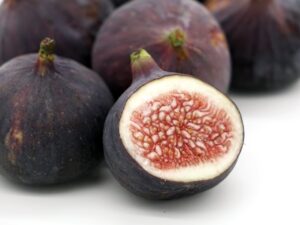
Scientific name: Ficus Carica
Note: Leaves of fig tree are also packed with multiple nutrients and believe to possesses wide range of health-benefits.
Types of figs
There are 5 common types of figs. Although they have different taste and sweetness; they provide similar sort of health benefits for us. Five common types of figs are:
1. Black Mission
2. Kadota
3. Calimyrna
4. Brown Turkey
5. Adriatic
Nutritional Facts
Fresh figs are low in calories and contain a variety of vitamins and minerals. However, be careful of dried figs because they are high in sugar and calories. One small (40g) fresh fig contains following nutritional composition:
Calories: 30 g
Carbs: 8g
Fiber: 1g
Copper: 3% of daily value
Magnesium: 2% of daily value
Potassium: 2% of daily value
Riboflavin: 2% of daily value
Thiamine: 2% of daily value
Vitamin B6: 3% of daily value
Vitamin k: 2% of daily value


HEALTH BENEFITS
Promotes digestive health:
Figs have been used as a home remedy or an alternative treatment for digestive problems like constipation. Figs contain fiber which helps to promote digestive health by softening stool decreasing constipation.
Improves vascular and heart health:
Figs improves blood pressure and cholesterol level, which ultimately helps to improve your vascular health and decrease the risk of heart disease.
Maintains blood sugar levels:
Fig leaf tea with breakfast may help in the production of adequate level of Insulin. However, fig fruits specially dried ones are high in sugar that may increase blood sugar level too so be careful with dried one.
Potential anticancer properties:
Fig leaves possesses natural latex from fig plants which are evident to have antitumor properties against human colon cancer, cervical cancer, and liver cancer cells.
Promotes healthy skin:
Figs have some beneficial effects on the skin too. In people with allergic dermatitis like dry, itchy skin as a result of allergic; figs are found to be highly beneficial.
Treat Asthma:
Figs fruits are very effective in the treatment of bronchial asthma. They moisturize the mucus membrane and drain the phlegm by which asthma patient feels much relief.
POTENTIAL SIDE EFFECTS
Figs have some potential side effects but only if consumed in large amount.
- If eaten at large quantities, they may cause diarrhea or other digestive problems.
- Figs are rich in vitamin k which can interfere with blood thinning medication if you intake plethora of figs.
- Some people may be allergic to figs. If you have an allergic to birch pollen then you are likely to have figs allergy as well.
- Fig trees also contain natural latex which may allergic to some people.
How to grow (Easy and Effective Methods)
Means of propagation
– Figs could be propagated by different means:
a. Seeds (sexual propagation)
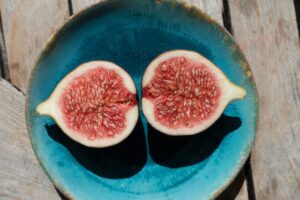
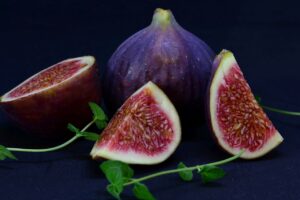
b. Cuttings
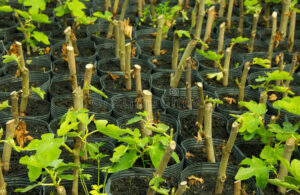
c. Grafting

–But, the best methods for propagation of figs is from its cuttings. Cuttings from winter is most preferred for its proper establishment. Buy it from nearest nursery where you could obtain cuttings with root from winter season.
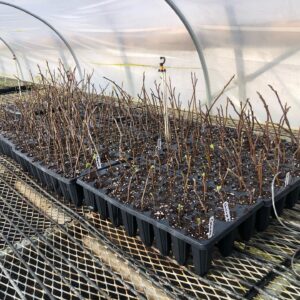
Soil
–Rich well-drained soil shows the best growth and development in figs. So, mix the soil with compost and manure for healthy growth.
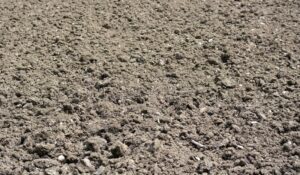
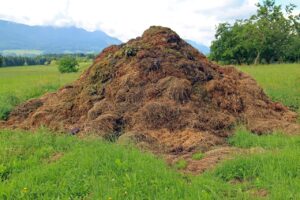
-If you are planting cutting in pots; then dig a generous-sized planting hole for the tree twice as root ball and little deeper. You need to cover the tree with netting as birds are quick to swoop in on the sweet fruit. Transplant it to larger area when it reach up to 2m height as root enlarges.
Sunlight
Plant in full sun protected from strong winds. This species prefer hot sunny environment.


Watering
-Make sure young plants are well watered. Especially during hot dry periods. A general rule is 2.5 to 4 cm of water per week.

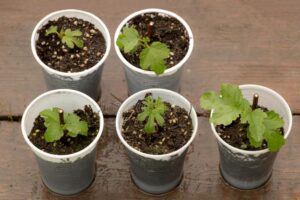
–Be careful on over-watering. The leaves will turn into yellow and fall down if you overwater your plant.
Fertilizing
-Apply fertilizers during growing season. Nitrogen and Potash fertilizers are preferred for its growth but at a recommended ratio of 1:1 i.e. like 10gm of nitrogen and 10 gm of potash.
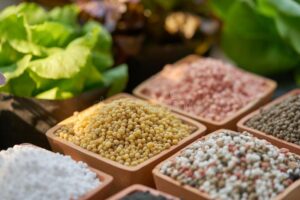
Harvesting
Let them ripen on the tree. Unlike many other fruits, figs will not continue to ripen after they are picked.


When to Grow
Preferred Season
Figs do well in areas with long and hot summers. Mid-spring is the best time to plant fig tree so that the trees can establish themselves while it’s cold. If you are planting figs in summer time; you need to keep soil constantly moist.
Climate:
They can grow in wide range of climates. However, figs fruits best in the areas with a relatively dry summer and little to no frost. Although they prefer long and hot summer; they could be grown well in colder areas by insulating containers or pots from freezing temperature and bringing them indoors.
DIFFERENT WAYS TO USE FIGS
Fresh: Fresh figs are low in calories. You can consume it as snacks, salads or desserts.
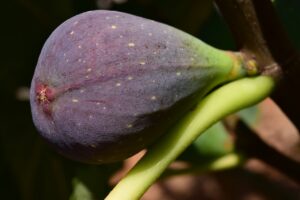
Dried: Dried figs are high in sugar and calories so you can eat in moderation. Dried figs are effective to use for constipation.
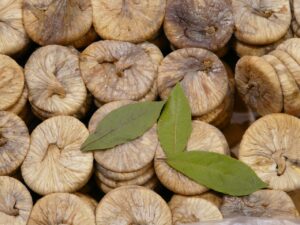
Leaves: Figs leaves are used in many ways however it’s rare to find in groceries. You can purchase dried premade fig leaves teas online or in special stores or you can make by yourself.

PROBLEMS YOU ARE LIKELY TO FACE WHILE GROWING FIGS
When you grow Fig plants; there will be many problems you need to solve like fig rust, leaf blight, mosaic virus, and endosepsis are the main disease. Stem borer mealy bugs, Fruit fly, aphids and scale can also affect fig trees.
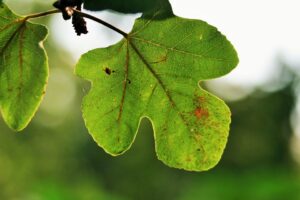
Don’t worry, we have a great solution for this. You can use organic pesticides to get rid of these diseases and save environment. Using organic pesticides twice every week will do just fine.
References
1. https://www.healthline.com/nutrition/figs-benefits#nutrition.
2. https://timesofindia.indiatimes.com/life-style/food-news/why-fig-is-called-a-fruit-of-heaven/photostory/71802682.cms?picid=71802778.
3. https://www.dreamstime.com/.
4. https://www.irishtimes.com/life-and-style/homes-and-property/gardens/figs-are-in-season-here-s-how-to-grow-your-own-1.3997672#:~:text=None%20require%20a%20pollinating%20partner,autumn%20crop%20begins%20to%20ripen.
5. https://www.gardeningknowhow.com/edible/fruits/figs/fig-propagation.htm#:~:text=Rooting%20Fig%20Cuttings%20Outdoors,(1.3%2D1.9%20cm.).



excellent info on moringa plants, where can I purchase seeds to plant it?
The best place is amazon at your location. Try checking some agro stores around you. Let us know for more questions.
A very interesting article. I thought they were part of pilea peperomioids. These nasturtium grow like weeds where I live in southern part of South Africa. The only problems are snails. They are hardy and face drought conditions well. We don’t get frost. I love them xx
Thank you for your comment. I really appreciate it. Please be with us and help us share with your friends and family.
You are so right about choosing well drained soil for planting the grapes. It worked great when we tried.
Thank you for your comment. We appreciate it.